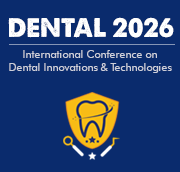Tooth Anatomy
The structure of a tooth is one of the most important topics when discussing dental science, as it plays a major role in how we view and treat teeth. Teeth are composed of three main parts, the crown, root, and enamel. The crown of a tooth is the portion of the tooth above the gum line used for biting and chewing, while the root is embedded in the jawbone and helps anchor and stabilize the tooth in the mouth. The enamel is the hard, outer layer of the tooth that is visible on the crown and protects the underlying softer dentin from wear and tear. Dentists and surgeons may need to view the actual structure of a tooth in order to properly diagnose certain issues. For instance, they may need to check the tooth’s structure in order to identify cavities, cracks, or fractures. To do this, they can take various types of imaging, such as an X-ray or an intraoral camera. Dental anatomy also plays a role in the development of a tooth. As the tooth grows from the crown, it passes through various stages of maturation. Depending on the progress of the tooth, it can take six months to two years for a baby tooth to fully come into existence. These stages include the crown, root, and eruption stages. A dentist also needs to be familiar with the different parts of the root of a tooth in order to properly diagnose and treat a patient. The root is composed of the cementum, periodontal ligament fibers, and the alveolar bone. The cementum helps attach the tooth to the jawbone, and the periodontal ligament fibers give vital support. The alveolar bone is the part of the jawbone that encases a tooth and is composed of hard tissue. In addition to learning the various components of a tooth's anatomy, dentists also need to understand the different types of teeth in order to properly diagnose and treat patients. For instance, humans have four main types of teeth, which are incisors, canines, premolars, and molars. Each of these types of teeth has a different type of structure and purpose, so it is essential for a dentist to understand the anatomy of these teeth. As you can see, dental anatomy is an important part of understanding, diagnosing, and treating teeth. Without this knowledge, dentists would not be able to properly take care of their patients’ oral health.

David Geoffrey Gillam
Queen Mary University of London, United Kingdom
Zvi Loewy
New York Medical College, United States
Khamis A Hassan
Global Dental Research Centre, Canada
Laurindo Moacir Sassi
Erasto Gaertner Hospital Cancer Center and Mackenzie Evangelical University Hospital, Brazil
Arnaldo Castellucci
Dr. Castellucci MD, DDS, Italy
Yasser Khaled
Marquette University, United States



Title : Efficacy of a biomin F toothpaste compared to conventional toothpastes in remineralisation and dentine hypersensitivity: An overview
David Geoffrey Gillam, Queen Mary University of London, United Kingdom
Title : Importance of clinical pharmacokinetics of medications in the postoperative period of patients undergoing dental surgical procedures
Vitoldo Antonio Kozlowski Junior, Ponta Grossa State University, Brazil
Title : Dealing with peri implantitis: An insight to various treatment regimens
Preetinder Singh, Academy of Oral Surgery, United States
Title : Knowledge and attitudes of dental professionals in the evaluation of Molar Incisor Hypomineralisation (MIH): Awareness, diagnosis and treatment approaches: An overview
David Geoffrey Gillam, Queen Mary University of London, United Kingdom
Title : Single root molars prevalence and its significance in human dental evolution
Uri Zilberman, Ben-Gurion University of the Negev, Israel
Title : Enhancing root canal success strategic use of orifice opener one step synthesis gels orifice barriers
Emmanuel Samson, Consultant Total Dental Care, India